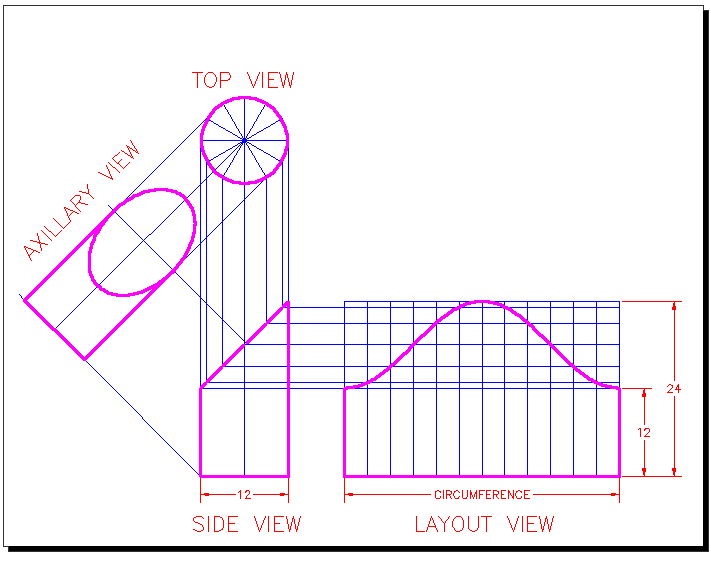Orthographic Projection On Autocad


Orthographic Drawing Techniques in AutoCAD: Putting your skills to use. So far in this level you have been learning the basic 2D AutoCAD commands.
Note: By default, the temporary drawing that is displayed is set to zoom in on all elements currently in the drawing. The ViewCube is set to Top view using WCS (world coordinate system). Twilight Render For Sketchup Crack File. Click the corners of the ViewCube to find an angle that lets you work with OrthoCube grips easily.
• On the Output Size panel, in the Scale drop-down list, click a scale (for example: 1:16). You can also adjust the scale when you place the ortho drawing.
• (Optional) On the Output Size panel, click Paper Check to make sure the scale you've chosen is appropriate. • (Optional) On the Library panel, click Save OrthoCube.
Telecharger Mega Manager Gratuit Avec Cracked more. In the Save View dialog box, enter a view name and click OK. • On the Create panel, click OK. • In the orthographic drawing space, specify the position of the lower-left corner of the viewport.
Topics covered in this Lesson: Orthographic Drawing Techniques in AutoCAD Putting your skills to use. So far in this level you have been learning the basic 2D AutoCAD commands. What you learned in this level will be a very large part of what you use in your daily drafting.
This tutorial isn't going to teach commands, but will instead show a common technique that is used a lot in 'Mechanical' drafting. It will also ask you to think about what you are drawing, and how it needs to be represented. Mechanical drafting is a field within the drafting world. In simple terms, it is used to describe the methods for drafting and designing machines, assemblies and in a nut shell, the 'parts' that used in everything from a fork to a Formula 1 race car.
It doesn't include anything that involves buildings and structures (Architectural & Structural drafting) or landscapes and roads (Civil drafting and engineering). Now just because you are dreaming of becoming an Architect, it doesn't mean that you should skip this tutorial. In fact, you will likely need to use these concepts or read diagrams related to this subject (such as with ). What is Orthographic Projection? If you look at the image below, you will see a drawing for a part. It shows the object with a top view, a front view and a side view. These three views are 'projected' and aligned with each other.
As you've seen with your Orthographic Mode setting (F8), lines are either horizontal or vertical - and in Orthographic Projection, the views are mostly horizontal or vertical in relation to each other. It's this alignment (projection) that makes the drawing easy to read. You'll also see an view that is sometimes used to give a more visual look. This tutorial won't cover Isometric drafting as it is shown in. Save your drawings that you do in this exercise for more practice in that lesson. Cara Buku Di Google Book Tanpa Software Testing. The reason that this method is used is that you can take a designed part, draw it, dimension it and then give all the needed information to the manufacturer. In some cases only 2 views are needed, but for anything more than a simple part, 3 or more views are needed.
Very complex parts will need 6 or more. There are 2 methods of deciding what views are used and where they are placed in the drawing. I'll borrow some info from to explain this: First-angle projection (European Standards) In first-angle projection, the object is conceptually located in quadrant I, i.e.
It floats above and before the viewing planes, the planes are opaque, and each view is pushed through the object onto the plane furthest from it. (Mnemonic: an 'actor on a stage'.) Extending to the 6-sided box, each view of the object is projected in the direction (sense) of sight of the object, onto the (opaque) interior walls of the box; that is, each view of the object is drawn on the opposite side of the box. A two-dimensional representation of the object is then created by 'unfolding' the box, to view all of the interior walls. This produces two and four. A simpler way to visualize this is to place the object on top of an upside-down bowl. Sliding the object down the right edge of the bowl reveals the right side view. Image of object in box, with views of object projected in the direction of sight onto walls using first-angle projection.